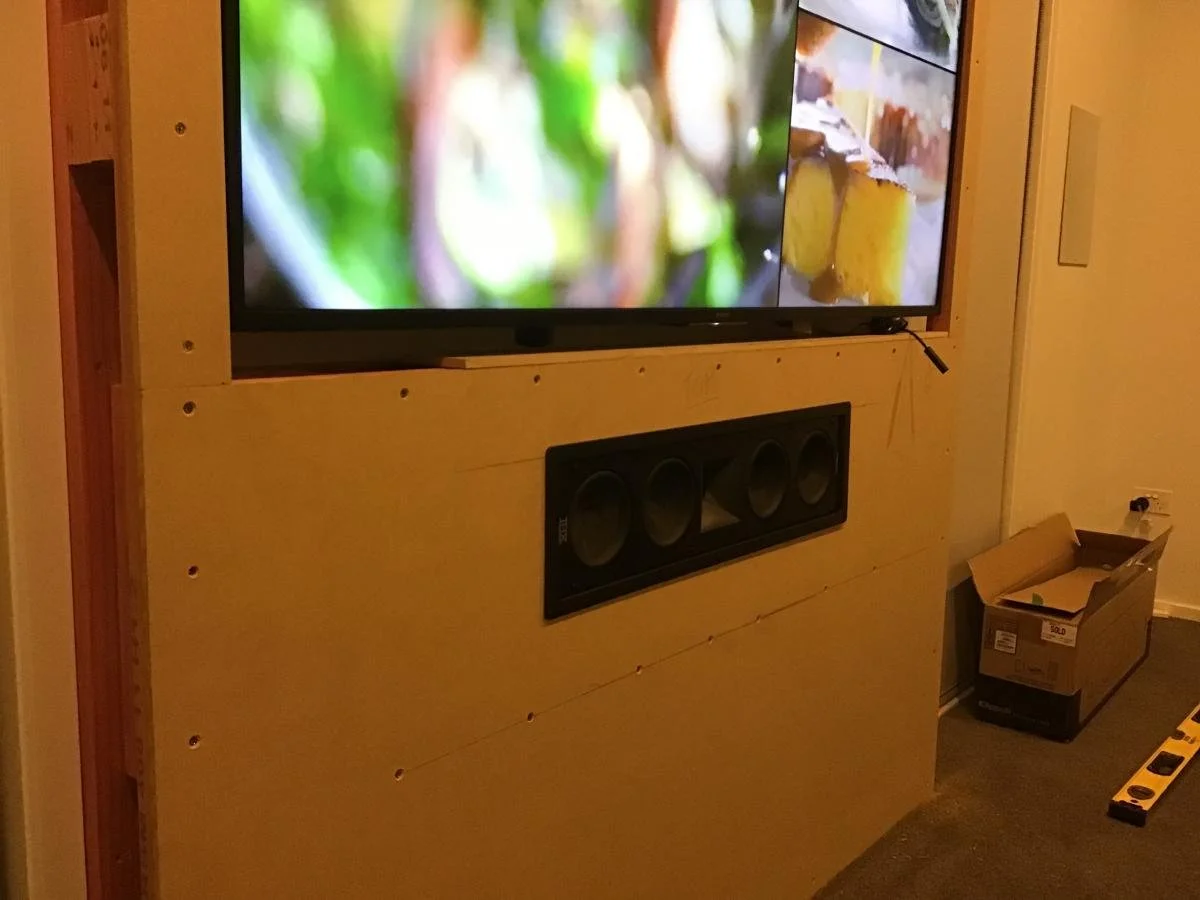
Wall-mounted speakers can transform your living room into a cinema or a concert hall. But placement makes all the difference. Put them too high, and you lose clarity. Put them too low, and you miss the detail. The good news? Getting the setup right doesn’t have to be complicated.
This is a practical guide. You’ll learn exactly how to position your speakers — no confusing terms or tech jargon. Whether you’re building your first home theater or upgrading what you already have, this will help you get the best possible sound in a small to medium-sized room.
Let’s get your walls working for your audio.
Start With the Listening Position
Everything revolves around where you sit. Your ears are the target. The front speakers, rear speakers, and even the subwoofer should be planned with this in mind. Imagine a triangle. You’re at one point. The speakers make up the other two. This is the “sweet spot.”
If you’re placing rear speakers behind your couch, they should be at ear level or slightly above. For front speakers, keep them at roughly the same height as your head when seated.
Keep Speakers at the Same Height
This one is often overlooked. Different heights throw off the balance. Wall-mounted speakers should line up horizontally, especially the left, center, and right front speakers. If one is higher or lower than the others, sounds won’t land where they should.
Try to maintain symmetry across the room. If one speaker is 5 feet off the ground, keep the others at that height too, unless placement options force a change. In that case, prioritize the front three speakers being at the same level.
Get the Angle Right
Speakers don’t just play sound — they aim it. Wall-mounted models need to be slightly angled toward your ears. This creates a more immersive soundstage. If they point straight ahead, you’ll miss the directional clarity that makes dialogue, footsteps, and sound effects feel real.
This matters most with front and surround speakers. Tilt them down slightly if they’re mounted high. Some wall brackets allow this. Use them.
The center speaker, especially in a home theater, should be directed right at your face. That’s where the dialogue comes from. If it’s off, the whole experience suffers.
Leave Space Around Each Speaker
Sound needs room to breathe. Don’t cram your wall-mounted speakers into tight corners or right up against the ceiling. This traps sound and causes distortion.
Aim for a few inches of open space around each speaker — especially from the ceiling and corners. If you’re mounting them in a small room, avoid placing them in alcoves or shelves. The reflections and echoes will muddy the audio.
Avoid Obstacles Between You and the Sound
Curtains, furniture, tall shelves — all of these can block or absorb parts of the sound waves. You might not even notice what you’re missing until you remove them. The cleaner the path between your speakers and your ears, the better the sound.
If you can’t avoid obstacles, raise your speakers slightly or angle them to avoid direct blockage. It’s not just volume that matters — clarity does too.
Use Proper Wiring and Cable Management
A strong signal is key to strong audio. Cheap or long cables can reduce quality. Stick to high-quality speaker cables, and keep the lengths even if possible. Avoid running them parallel to power cords — this reduces interference.
Don’t let messy wires hang around either. Use wall cable covers or trunking to hide them. This isn’t just about looks. It also reduces the risk of damage and keeps the setup safe.
Test and Adjust Based on Your Room
Every room is different. Hard floors reflect sound. Carpets absorb it. High ceilings make things echo. That’s why you should always test your setup after installing the speakers.
Play a variety of content — movies, music, games — and sit in different spots. Do voices sound centered? Are background effects clear? Do bass notes feel balanced or overpowering?
Small tweaks can have a big impact. Move a speaker up or down an inch. Change the angle slightly. The goal is not perfection — it’s what sounds best to you in your space.
Quick Recap — The 5 Most Important Rules:
- Align front speakers at ear level
- Angle all speakers toward the main listening area
- Leave space around each speaker
- Avoid physical barriers between speakers and ears
- Test and fine-tune based on your room
Don’t Forget the Room’s Shape and Layout
A square room behaves differently than a rectangular one. If your walls are close together, sound can bounce too much. In open layouts, it can feel like it’s disappearing. Treat the room like part of your audio system. Add soft furnishings to control reflections. Use rugs, curtains, or even acoustic panels if needed.
Where you place your furniture matters too. Large sofas can block sound from side or rear speakers. Move things around and listen. You’ll hear the difference.
For Small Rooms, Less Is More
In smaller spaces, wall-mounted speakers are ideal — they save floor space and offer better positioning. But don’t overdo it. Two or three well-placed speakers will sound better than five in the wrong spots.
Smaller rooms also amplify bass more easily. Keep the subwoofer off the wall if you can, or lower the volume to avoid boominess. Wall-mounted satellite speakers can do a lot on their own when placed right.
Avoid Common Mistakes
Most people mount speakers too high or too far apart. This breaks the soundstage and makes it feel disconnected. Others place them too close to corners, causing harsh reflections.
Don’t guess. Take measurements. Use a level. Mark the wall before drilling. A few extra minutes of setup time can save you hours of frustration later.
Trust Your Ears More Than Specs
Speaker manuals may tell you the “ideal” setup, but your ears are the final judge. What sounds perfect in one room might not work in another. So trust your instincts. If something sounds off, it probably is.
Mount your speakers. Sit back. Play your favorite movie scene or album. Close your eyes. Does it feel like you’re in the middle of the action? If yes, you nailed it.
Future-Proof Your Setup
If you’re planning upgrades later, think ahead now. Mounting brackets that tilt or swivel will help with future repositioning. Choose universal mounts if possible. Run extra cabling behind the walls in case you add a speaker down the line.
Even if you only have two speakers now, design the space like you’ll have five. You’ll thank yourself when the time comes to expand.
The Final Word
Wall-mounted speaker placement isn’t just about looks — it’s about sound. Height, angle, spacing, and room acoustics all work together to create the experience. You don’t need an expert or expensive tools. Just time, care, and a bit of experimentation.
If you want to do it right from day one, it helps to start with great speakers. For premium wall-mounted speaker solutions that blend with your interiors and elevate your audio, visit www.cinebels.com. They offer curated audio products for every kind of home — from compact living rooms to serious home theaters.
